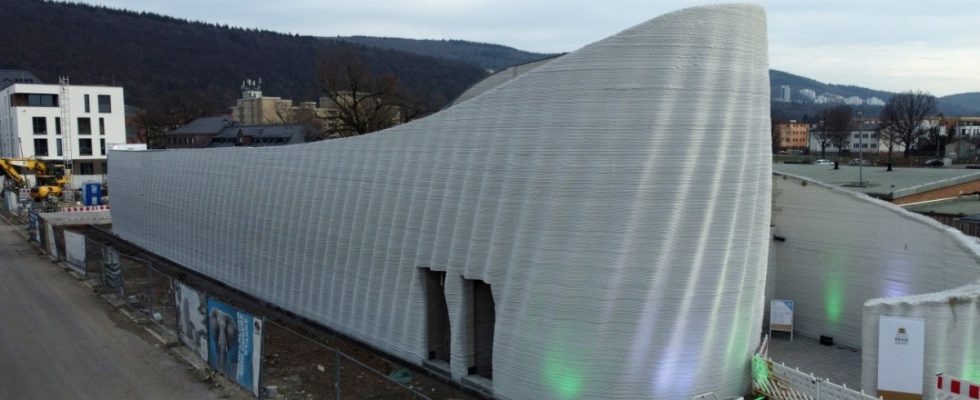Nowadays you can print anything: an art sculpture, furniture of all shapes and types, a hearing aid, bridges and crowns for teeth, prostheses or orthoses for arms and legs and – of course – functional weapons. None of this is a problem for 3D printers. But why should you think small? Why not print a big house?
The largest building in Europe, which was designed on a computer and created using the 3D concrete printing process, was recently completed in Heidelberg: the structure is 54 meters long, eleven meters wide and nine meters high, and its shape is reminiscent of a sand dune The surface quality is reminiscent of a layered building made of Lego bricks. At the end of January, Heidelberg iT, an information technology company, moved in and opened a data center there.
Printing three-dimensional things has less to do with ink on paper than it does with a tube of whipped cream. A pipe from which liquid concrete flows moves along the foundation lines and applies a thin layer, continues following the foundation and applies a new layer. To ensure that the concrete does not drip from the ceiling during printing, the Heidelberg building is tapered towards the top.
It took a total of 170 hours for the shell to be completed; there were ten months between the start of construction and completion. The 3D concrete printing construction method is fast and environmentally friendly, says the builder, Krausgruppe. “The construction method saves time, reduces errors,” says Viktor Mechtcherine, director at the Institute for Building Materials at the TU Dresden, “and has a promising future in times of a shortage of skilled workers.” Compared to tried-and-tested construction methods, fewer construction workers are needed, who can then work more safely because they don’t have to stand on their feet and there is less dust and noise.
Will the house become a street?
There should also be less waste. On the Heidelberg construction site, workers only mixed as much concrete as necessary. A full 70 percent of material can be saved, according to material supplier Heidelberg Materials, one of the largest concrete manufacturers in the world, which praises its special printing material as recyclable. This can later be reused for new houses or as filler material in road construction. Will the server house eventually become a street? Might be.
In recent years, many a house has been printed into the landscape. In 2021, tenants moved into what was then the largest concrete-printed residential building in Europe with 380 square meters of living space in Weißenhorn, Swabia. As is often the case, the dimensions are different in the USA. In Florida last summer, a 940 square meter house was built using 3D concrete printing: a luxurious horse stable. And a Texas construction company wants to establish the process, which promises to be more cost-effective than traditional construction methods, on the social housing market.
Builders in this country still have to run from Pontius to Pilatus to get approval. Viktor Mechtcherine not only conducts intensive research in the field, but is currently working on guidelines and standards for 3D printed buildings – in a sense, on the small print for the large print.

